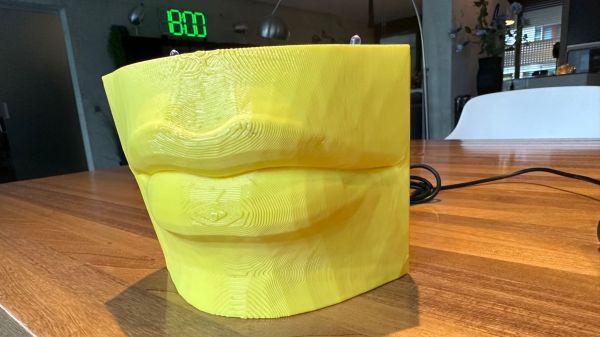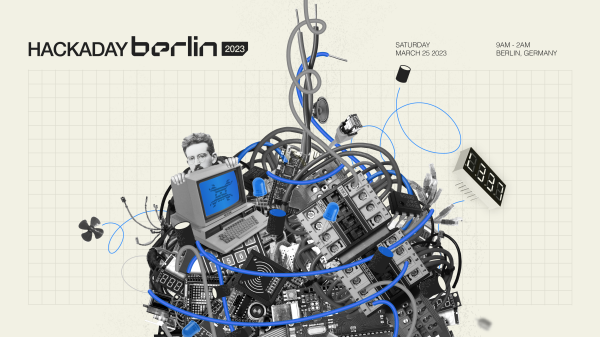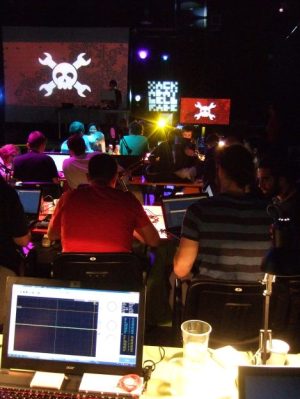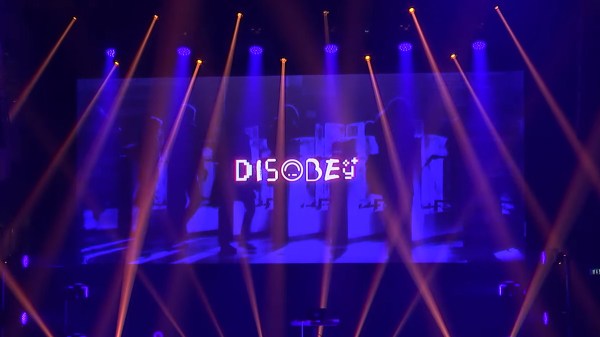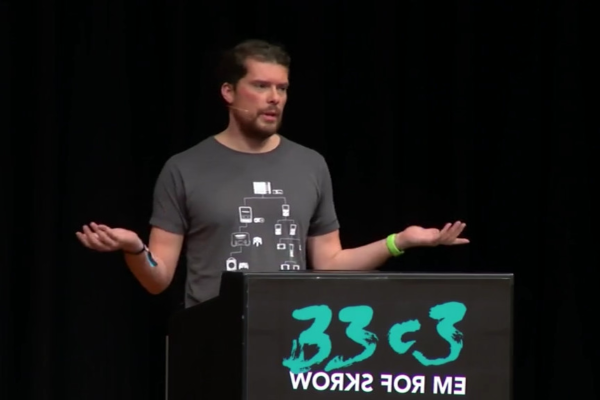Few things are more annoying than being at a conference and having an inconsiderate group conducting a vociferous sidebar that drowns out the speaker. More annoying still is the inevitable shushing; nobody likes being either the shusher or the shushed. So why not take the humans out of the loop and automate the chore of keeping the peace?
Such was the challenge presented to [BotBerg] before a recent conference, who came up with this automated shusher (translation) on short notice. The build is based on the Arduino Nano 33 BLE Sense Deck, a sensor-rich dev board that’s perhaps a little overkill for the job, but hey — you roll with what you’ve got. The board’s MEMS microphone is the sensor used here, which measures the ambient sound pressure level multiple times per second. When the background noise exceeds a potentiometer-set threshold, an MP3 player is triggered to play a sound clip entreating the offenders to pipe down. The whole thing is housed in a playful 3D-printed enclosure shaped like a mouth, which should be sufficient reminder alone to keep yours shut.
This was a quick-and-dirty prototype, of course, and probably could use some refinement. Given the behavior we’ve witnessed at some conferences, we’d say hooking it up to a Nerf turret gun would be a justifiable escalation.

